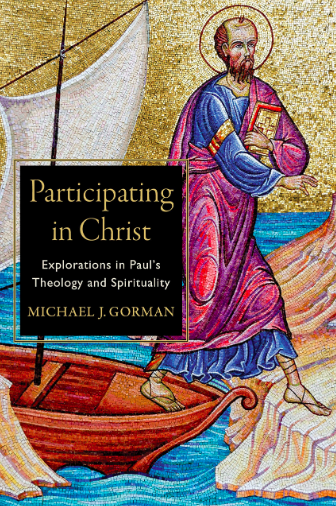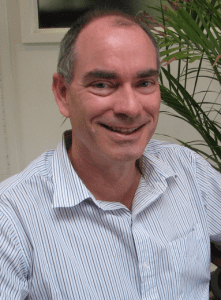 Part One of the new book by Harry Lee Poe and Jimmy H. Davis God and the Cosmos: Divine Activity in Space, Time and History asks questions about the way humans have conceived of God and the way this impacts ideas about God’s action in the world. The last two chapters in Part One Poe and Davis consider with process theology and God of the Gaps thinking. These chapters delve more deeply into the question that frames this portion of the book – what kind of God interacts with the world – and how does he interact.
Part One of the new book by Harry Lee Poe and Jimmy H. Davis God and the Cosmos: Divine Activity in Space, Time and History asks questions about the way humans have conceived of God and the way this impacts ideas about God’s action in the world. The last two chapters in Part One Poe and Davis consider with process theology and God of the Gaps thinking. These chapters delve more deeply into the question that frames this portion of the book – what kind of God interacts with the world – and how does he interact.
Process theology and intelligent design are two different ways of wrestling with the idea of God in the context of the materialism and naturalism that has captured Western thinking. These assumptions of materialism and naturalism are, it seems to me, in the air we breath and the water we drink. They are simply the unreflective, unexamined starting point for much of Western intellectual engagement, both in the academy and in the broader culture. Poe and Davis explore the positives and negatives of process theology and then move on to God-of-the-gaps arguments and finally to the way to get beyond these philosophical arguments to a more robust theological view.
Process theology allows natural theology to take a cue from evolutionary theory with all of being, including creation and the nature of God, evolving in time. There are rather unChristian, deistic, philosophical forms of process theology that invoke, perhaps, a spiritual nature to life, but have no room for a personal God of the sort revealed in scripture, or for a God who acts in his creation. This is interesting, but need not really concern us in the search for ways to think as Christians about the interaction between God and his creation.
Is process theology a valid option to think about the role of God in the world?
How far can this take us? That is when does it cease to become a Christian view?
There are also some forms of process theology that are more clearly Christian. Here Poe and Davis outline the thinking of William Temple and Pierre Teilhard de Chardin. These two have put some ideas forward that are worth pursuing. Poe and Davis acknowledge this, but seem to view the strength of process theology as lying in the way it underscores the inadequacy of a purely material outlook rather than its positive suggestions, although their comments about the inadequacy of natural selection leave me scratching my head. I expect the questions on natural selection will come up again in Part Two of the book. Poe and Davis sum up this discussion emphasizing the impact of process theology on one’s view of the interaction of God with the world:
Process theology makes the same error as the reductionist monarchical model makes when it assumes that God must always act in only one way. Rather than think God must always do the same thing, we may think of God relating differently but appropriately to every level of organization of the universe. He may operate in a deterministic way at some points and in an indeterminate way at other points. Like Calvinism and Arminianism, process theology would have God always do it the same way, which leaves God less free than the people who think about God. (p. 120)
Some claim God must know and determine everything, his omniscience and sovereignty demand this; in contrast many process theologians claim that God must leave everything free, action by God would deny the universe the freedom to become, and becoming is the core of process theology. Poe and Davis suggest that both these extremes are lacking.
God-of-the-gaps provides another approach to natural theology. In this case a metaphysical framework is at play that views events as either of God or simply natural.
The God-of-the-gaps phenomenon arises as people try to fix the place in nature where God may be found to act. This understanding of divine activity is consistent with every other kind of real event in a closed material world. If the activity of God cannot be shown to be of the same kind as other events in the material world, than it cannot be understood as real. Of course, if the activity of God can be described within nature, then it must be a natural event rather than divine action! (p, 131-132)
But the view that puts divine causality on the same plane as physical causality is necessarily limited. It leads to a limited view of God and of his action, or room for action, in the cosmos. One example Poe and Davis use to illustrate there point is the incarnation.
At the heart of the Christian faith lies the ultimate expression of this conflict: the incarnation. Was Jesus fully man or fully God? We ask God to show himself in ways we can perceive, but when he does, we say he is just a man. The central event of Christian faith demands that Christians employ a metaphysic that allows for multiple levels of experience. Any activity of God in the world that can be observed can necessarily be described according to the categories of nature. Does this make divine activity and natural laws mutually exclusive? (p. 132)
Intelligent design – looking for empirical evidence for divine causality separate from physical causality – is a search for a God-of-the-gaps. This doesn’t mean that the world is not designed, all Christians believe that God designed the world intelligently and for a purpose, but that divine causality and physical causality can and do coexists in the same phenomena.
 Beyond the God-of-the-Gaps. Poe and Davis proceed here to muse a bit about topics like methodological naturalism (for which they have some negative comments); naturalism of the gaps (by which they mean the imposition of philosophical naturalism beyond the limits where science can speak); and the ability of humans to manipulate nature (heat or cool our houses, build dams, harness electricity, fly to Australia, and so forth). Some of the discussion gets a little off track (for example I would say that we have not learned to overcome the laws of nature, and we certainly don’t violate the laws of nature, but we can and do utilize the laws of nature to achieve a desired goal). By and large, however, the point is a good one. The human mind can conceive of ways to manipulate nature. Certainly the mind of God can do the same and more.
Beyond the God-of-the-Gaps. Poe and Davis proceed here to muse a bit about topics like methodological naturalism (for which they have some negative comments); naturalism of the gaps (by which they mean the imposition of philosophical naturalism beyond the limits where science can speak); and the ability of humans to manipulate nature (heat or cool our houses, build dams, harness electricity, fly to Australia, and so forth). Some of the discussion gets a little off track (for example I would say that we have not learned to overcome the laws of nature, and we certainly don’t violate the laws of nature, but we can and do utilize the laws of nature to achieve a desired goal). By and large, however, the point is a good one. The human mind can conceive of ways to manipulate nature. Certainly the mind of God can do the same and more.
The more intelligent we become, the more we realize just how open the universe really is. As Polkinghorne has observed, “science’s description of physical process is not drawn so tight as to condemn God to the non-interactive role of deistic spectator.” God is at least as free and able as humans to interact with the universe. (p. 137)
A Trinitarian God. Poe and Davis consider the nature of God as a relational being, Father, Son, and Holy Spirit, to be significant for a proper understanding of the God who acts in his creation. Taking any one of these alone as a model for the interaction of God with the cosmos will be limited and flawed.
Theological systems from classical theology to Calvinism to process theology have in common the tendency to conceive of God as acting in the same way at all times, a view unsustainable from Scripture but perfectly consistent with a philosophical approach to faith. Polkinghorne has argued that “God’s utter perfection lies in the total appropriateness at all times of the Creator’s relationship with creation, whether that creation is a quark soup or the home of humanity.” (p. 137)
The Trinity allows for this appropriate interaction at all times. God can be in time, transcend time, localized in space, and everywhere at once. The Father is, they suggest, “constantly aware yet forever removed from the world of space and time.” Transcendent, eternal, perfection, absolute holiness are attributes of the Father. The Father interacts with his creation through the Holy Spirit and through his messengers (angels). The Holy Spirit is the most significant here as it proceeds from the Father as part of the Godhead. The Holy Spirit extends into time and space and exercises the power of God in time and space. The Holy Spirit is extended, wave-like. The Son on the other hand is particular. The Son entered into space-time in the incarnation.
In God’s incarnation, however, God comes to grips with a fundamental problem posed by a universe in which people can have freedom: theodicy, or the problem of suffering. A trinitarian God experiences this problem from the inside and not merely from the vantage point of ultimate wisdom and knowledge. As Father, Son, and Spirit, the trinitarian God becomes part of his own physical creation as the Son while never ceasing to be distinct from it as the Father. God experiences the pain and suffering through participation in the cosmos. (p. 141)
The Holy Spirit interacts with the universe, the material creation from quark to black hole and everything between in its openness and process. The Son interacts personally with humans created in the image of God by becoming one of us. The Father transcends space and time.
The chapter finishes with a brief reflection on the world to come – the eschaton. This will be something new and different with the disappearance of the apparent contradictions between Father, Son, and Holy Spirit, and a new physics allowing for resurrection, new heavens, new earth, in continuity with the resurrection of the Son of God.
Does this trinitarian view of God’s action in the world make sense to you?
Do you agree that theological systems limit the role of God, and thus inevitably miss part of the picture?
If you wish to contact me directly, you may do so at rjs4mail[at]att.net.
If interested you can subscribe to a full text feed of my posts at Musings on Science and Theology.











